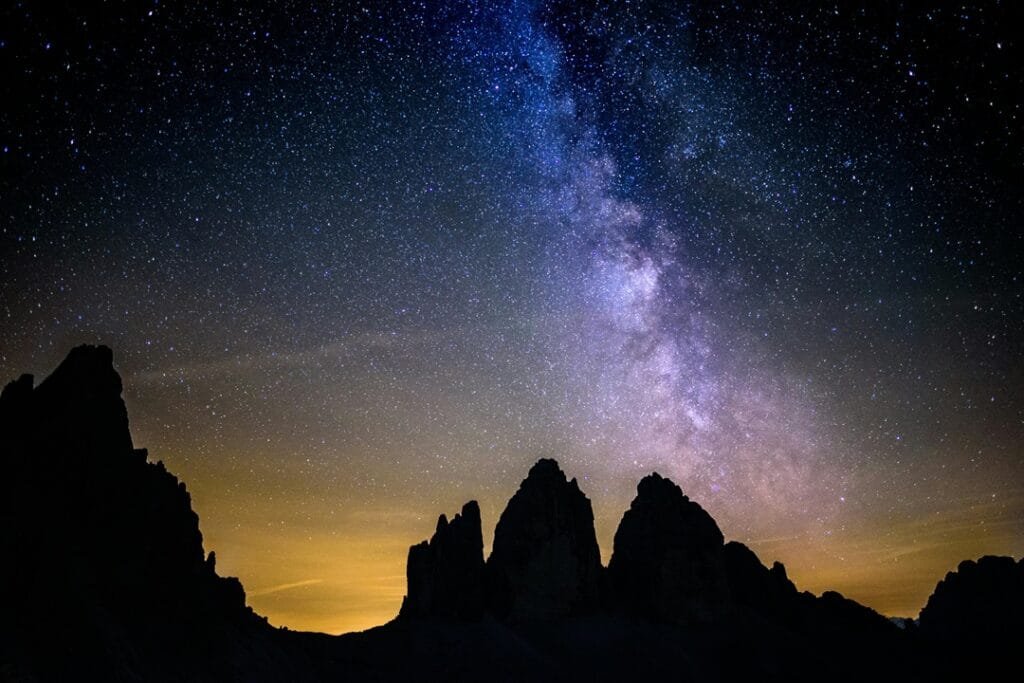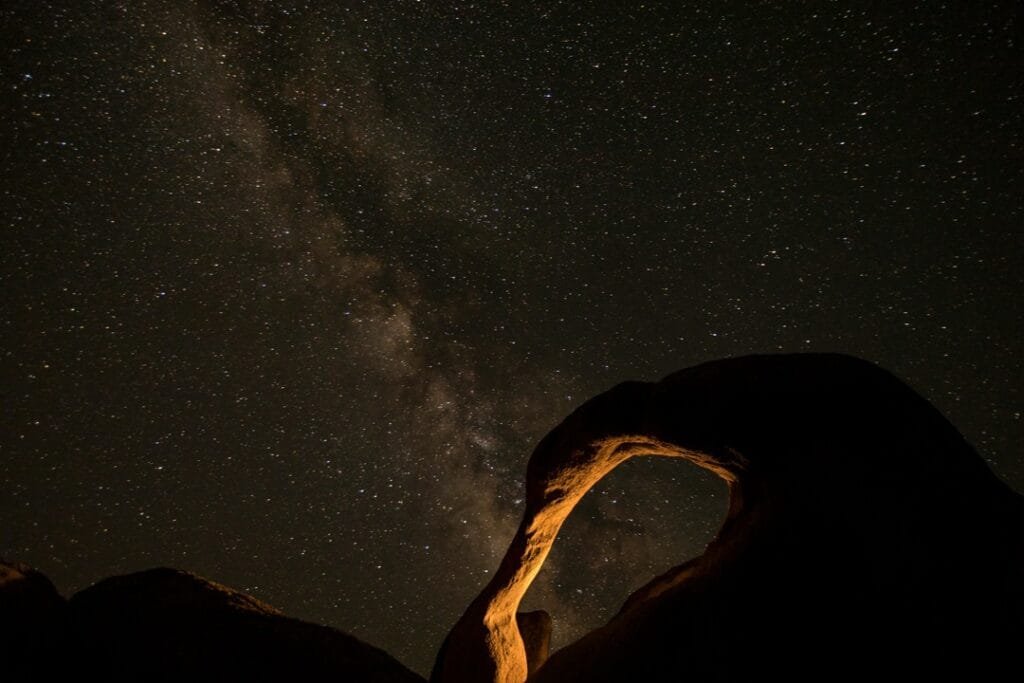“Astrophotography for Beginners: Unlocking the Stars” is your chance to dive into the wonders of the night sky, showing you how to capture amazing photos of stars and galaxies with just a camera and a bit of curiosity.
Astrophotography isn’t just about pointing your camera at the stars; it’s an exciting journey into the cosmos. Whether you’re drawn to the mesmerizing glow of the Milky Way or the captivating movement of celestial bodies, understanding the basics of astrophotography will open up a world of breathtaking possibilities.
Step into the Cosmos with Your Camera
The night sky is a photographer’s ultimate canvas. There’s something hypnotic about looking up at the stars — it draws us in. With the right equipment and a bit of knowledge, you can capture the stars in all their glory, from distant star clusters to the serene phases of the moon. Whether you’re shooting a wide view of the heavens or zooming in on the details of far-off galaxies, you’re joining a community of passionate astrophotographers charting the mysteries of space.

MasteringCreative Techniques to explore
Before you head out with your camera, it’s essential to have a vision. What kind of photos do you want to capture? Do you have the tools and skills needed to get those perfect shots? Take the time to explore your options — you may discover some hidden interests along the way.

Light Painting (Astrophotography for Beginners: Unlocking the Stars)
This fascinating technique uses long exposures to create dazzling trails of light. By moving light sources during the exposure, you can craft beautiful, otherworldly images. Many astrophotographers use light painting to capture the Earth’s rotation, turning star trails into sweeping arcs across the sky.

Time-Lapse Photography (Astrophotography for Beginners: Unlocking the Stars)
This is where you capture a series of images over some time and then combine them into a video. It’s how those stunning videos of a sun or moon rising in seconds are made — only you’re focusing on the slow dance of stars across the sky.

Starscapes (Astrophotography for Beginners: Unlocking the Stars)
These expansive shots of the starry sky require a bit of skill and the right equipment, but the results can be awe-inspiring. These wide-angle photos show the stars in ways your naked eye can’t even imagine.

Close-Up Shots (Astrophotography for Beginners: Unlocking the Stars)
Want to capture the incredible detail of planets, the moon, or other distant objects? With a telescope, you can take breathtaking close-up images of celestial wonders. This style of astrophotography does require more gear, but the results are worth it.

Whatever type of photography you’re going for, remember to frame your shot carefully. Expert photographers suggest, “Including something in the foreground — like trees or a landmark — can help anchor your image, making it feel grounded and connected to the world below, not just a scene from a sci-fi movie.”
Understanding the Power of Long Exposures
When you’re shooting in low light, you’ll need longer exposure times to capture enough light. But keep in mind, the Earth’s rotation causes stars to create light trails in your photos. To keep those stars sharp and crisp, use the 500 Rule, a handy guide to prevent star blurring due to Earth’s movement.
Choosing Your Gear and Settings for Astrophotography
Now that you’ve decided what type of photos you want to take, it’s time to pick your gear. While smartphone cameras are advancing, a DSLR or mirrorless camera with interchangeable lenses is your best bet for astrophotography. And don’t forget the tripod — it’s essential for keeping your shots stable during long exposures.
For the best results, choose a camera with a larger sensor. According to expert photographers , “For night photography, cameras with high ISO capabilities (ISO 6,400 and higher) will give you cleaner, more detailed images.”
If you want to get into deep-sky photography and capture detailed shots of distant stars and galaxies, you’ll need an equatorial mount, telescope, and a guide scope, along with other specialized equipment.
For beginners, a wide-angle lens with a short focal length is the perfect starting point. These lenses let in more light and are great for capturing the vastness of the night sky. If you’re planning to do long exposures, consider using an equatorial mount. It compensates for Earth’s rotation, keeping your stars sharp and in focus.
Capturing the Night Sky: How to Take Astrophotography Photos
To get the clearest shots, aim for a location with minimal light pollution. If you have a favorite dark spot or a hiking trail, take your gear and head out.
Here are the key settings you’ll want to tweak for the best astrophotography shots:
ISO (Astrophotography for Beginners: Unlocking the Stars)
ISO controls how sensitive your camera’s sensor is to light. A higher ISO will brighten your photos, but it can also introduce grain. For astrophotography, keep your ISO low enough to avoid noise, but high enough to capture the light needed for a crisp, clear shot.

Shutter Speed (Astrophotography for Beginners: Unlocking the Stars)
This setting determines how long the camera’s shutter stays open to gather light. Since you’re shooting in the dark, you’ll need longer exposure times, but too long a shutter speed will result in blurry stars. Start with exposures around 5-10 seconds and adjust based on the results.

Aperture (Astrophotography for Beginners: Unlocking the Stars)
The aperture controls how much light enters your lens. For astrophotography, a lower f-stop (wider aperture) is ideal. While higher f-stops offer more depth of field, a lower f-stop helps capture more light, which is crucial for shooting stars and galaxies.
Experiment, adjust, and learn from each outing. You’ll discover what works best and what gear you’ll need for your future astro-adventures.
Editing Your Astrophotography Shots
Editing is a huge part of astrophotography. Even with the perfect shot, you may need to tweak things to enhance the colors and bring out the details that light pollution or environmental factors may have dulled.
To make your images shine:
- Adjust levels and curves to fine-tune the exposure.
- Increase localized contrast to make your stars pop.
- Reduce noise to clean up any graininess in your shots.
Astrophotography is a technical and equipment-heavy type of photography, but with an open mind and a sense of adventure, you’ll be able to capture awe-inspiring photos that make others want to look up at the stars. As long-time and expert photographer advise, “Embrace the unpredictability. Sometimes the best shots come from the unexpected moments.”
In the end, astrophotography is about more than just the photos you take — it’s about the adventure, the process, and your unique journey to explore the stars. So grab your gear, step into the night, and let the sky be your canvas.

Conclusion
Astrophotography is a magical blend of art and science, where the night sky becomes your canvas and your camera the brush. Whether you’re capturing the swirling patterns of stars or zooming in on distant planets, the journey of learning and experimenting is as exciting as the final image itself.

With the right gear, a little patience, and a lot of creativity, you can create photos that not only showcase the beauty of the cosmos but also connect you to the vastness of the universe. So, embrace the adventure, don’t be afraid to make mistakes, and let the stars guide your way as you uncover the endless wonders above. Happy stargazing!

